Evaluation
Question 1: In what ways does your media product use, develop or challenge forms and conventions of real media products?
Throughout our film opening we made use of many conventions which are commonly found in real media products. The first convention that we used in our film opening was a title sequence, within this we included 5 different shots. The first shot was of the logo of our company, we then had two shots which showed the actors and production staff, one shot which showed the title of the film 'Classified', then one more to give a brief explanation of the scene. We included ambient sound over it to make it sound dark, with the sound going into a crescendo when the title is shown. As seen below, in our title sequence we used a fairly standard method of presentation, showing the information in a slideshow fashion. I have included side by side images of our title sequence and the title sequence from Quentin Tarantino's 'Pulp Fiction', as we presented ours in a similar way to his. However due to the nature of our film, we wanted to create a sullen and scary atmosphere during our title sequence, so we used a black and white colour scheme and as mentioned earlier we included ambient music which has a sudden crescendo when the title is displayed.
Side by side comparison:
Pulp Fiction: Our film opening: 'Classified'
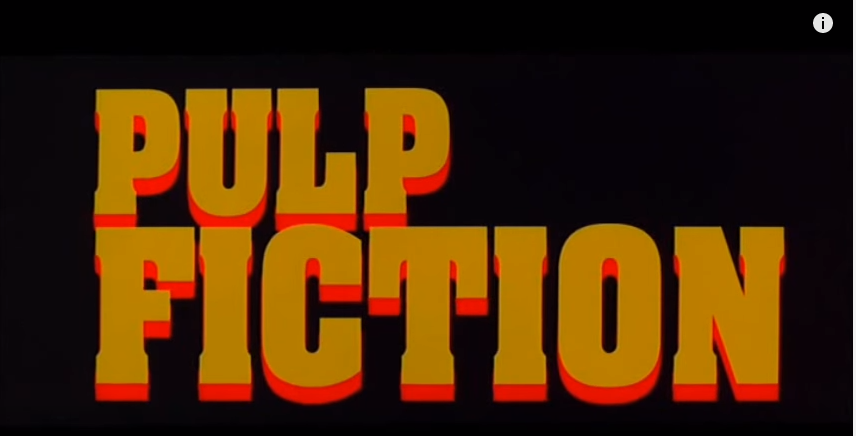
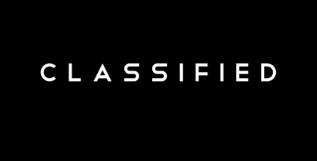
Within our title sequence we included a small amount of text, briefly explaining and setting the scene for the audience. We did this since although we wanted to create enigma within our product, without the audience understanding a certain amount, none of the scene would make sense and the enigma would be pointless. I have included a picture of where we have done this below.

Throughout the piece we tried to make as much use of Mise en Scene as possible. For the settings and props, we were lucky to have an abandoned school building readily available for us to use. We made use of many rooms which looked derelict but had enough natural lighting to work with. In the building we used, there was a lot of foliage which had made it's way in and many safety hazards, however we carried out a detailed risk assessment to prevent any potential injury. An example of where we used this is in the scene where the protagonist is sleeping, we threw rubbish that was already in the room around the sleeping area to create the effect that the character is homeless. For Costume, Hair, and Make Up, Oscar brought in a smart shirt and dress trousers with a smart coat to play the role of an assassin/hitman. We also put a small amount of brown make-up on my face and hands to look like dirt. In our scene we tried to use body language to show how the characters are feeling as effectively as possible. I have chosen some examples of where we did this to show, relief, determination, and frustration.
In this shot we were trying to achieve a sense of relief since the hit man character had just walked past the room that this character was in.
In this shot we were trying to achieve a sense of determination as he was at this time chasing after the protagonist and was struggling to keep up.
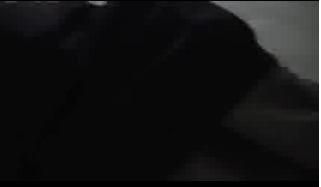 Here is a short clip from our sequence showing how we used body language to show frustration. This was shortly after the protagonist had escaped from the antagonist, who can be seen in the clip.
Here is a short clip from our sequence showing how we used body language to show frustration. This was shortly after the protagonist had escaped from the antagonist, who can be seen in the clip.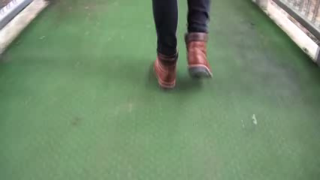 We made use of many different camera shots and angles during our sequence. The first shot in the sequence is a High shot, Medium Shot, which tracks the antagonist's feet as he is walking towards the building, we also make use of parallel cuts here to show both the antagonist and the protagonist in the same frame of time.
We made use of many different camera shots and angles during our sequence. The first shot in the sequence is a High shot, Medium Shot, which tracks the antagonist's feet as he is walking towards the building, we also make use of parallel cuts here to show both the antagonist and the protagonist in the same frame of time.
We kept the face of the antagonist hidden throughout the sequence until the protagonist had escaped. We did this to create a sense of enigma, this is also one of the main reasons that we focused on the antagonists feet when he was walking. We also focused on the back of his head and his legs at times to avoid revealing his identity.
When showing the protagonist sleeping we used a series of cuts from the antagonist walking into the building. We used a very high slow panning shot from the protagonist's toes to his head to show this. When the antagonist kicks the door open the camera reaches the protagonist's head and his eye's suddenly open as he realises what is happening. The shot of the door being kicked open also uses match on action to create a sense of excitement.
We have a medium shot which follows the antagonist from behind as he walks through a hallway towards the room which the protagonist is in. At this point we still have not revealed the face of the antagonist to create enigma.
We used a long shot where the protagonist is framed using the window of a door, we see this as the antagonist walks past the room. Here we made use of low key lighting and backlighting the protagonist to create a silhouette of the protagonist. This can be seen in the picture below. We hoped to heighten the sense of enigma through this and it also shows our use of lighting to create mood.
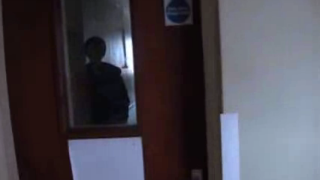
Here is another example of a shot where we have used a backlight to create low key lighting in the foreground with a slight silhouette.
We made use of parallel cutting and a tracking shot to make a fast paced chase scene. Although both the antagonist and protagonist are within the same shot at points, each one of them is singled out at times. Due to the short shot duration and frequency of cuts that we used it increased the pace of it dramatically.
Question 2: How does your media represent particular social groups?
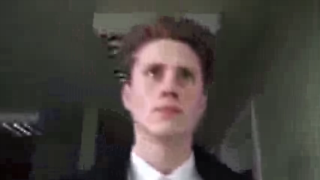 |
| The Antagonist, Medium - High Class |
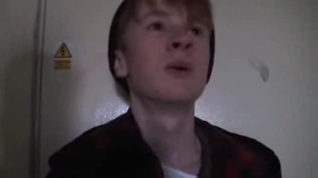 |
| The Protagonist, Medium - Low class (Homeless) |
In using two white males for our actors, we have not showed a diversity in race and gender, however due to the fact that we only had two characters and very limited options for actors. If we had more characters to cast we would have been much more likely to have gained a diversity in race and gender throughout our cast.
Similarly to the age range, we have not positively or negatively represented any races in our film opening.
In our film opening we were aiming for the protagonist to be liked and sympathised for, and the antagonist to be disliked. We used the stereotype of the high class, rich, character being evil intentionally. We used it since it is a cultural stereotype that rich people can be greedy and power hungry. In following this stereotype, we emphasised the fact that he is the antagonist. We also followed a parallel stereotype for the protagonist, assuming him to be good since he is assumed to have less money and to be of a lower class. This stereotype is both modern and traditional.
Question 3: What kind of media institution might distribute your media product and why?
When looking for an institution to distribute our film we would look towards independent film distributors since they would be most likely to want to take on our film. This is because we are also independent film makers.Some of the distributors that we would submit our film to would be:
- Metrodome
- Optimum Releasing
- Momentum



I chose these companies since they are independent film distributors that are more likely to take on an independent film.
One of the primary ways that we would search for a Distributor would be through film festivals. We would submit our short film to as many film festivals as possible, focusing mainly on the independent film festivals as they are most likely to show our film. However we would still submit our film to larger film festivals such as The Times bfi London Film Festival, the Edinburgh International Film Festival, and the Cambridge Film Festivals. The majority of films that distributors acquire are completed films which are sourced at film festivals, this is why we think it is such a good idea to attempt to find a distributor here. We would target film festivals that the distributors mentioned earlier tend to frequent.
If we cannot find a distributor through film festivals there are other options. The main other option is to forward DVD/Digital copies of our film opening to these film distributors and others. In sending these copies to film distributors with our companies information, the hope would be that they would respond saying that they would like to distribute our short film.
To Distribute our film we would also need to make sure that all of our assets for press and publicity are in place. To do this we would possibly need to produce things such as, stills, press kits, trailers and clips, tapes/DVDs, and a website. It's very important for us to have at least one still that we can use as the main image to publicise our film. For this still we would look for a striking and colourful image that can be used for both general marketing, festival catalogues, etc. In the same vein, we would need to create a poster which could be using this image or other images.
In creating a press kit we would need to include a variety of different information and items.
Some of the items and information we would need to include in a press kit:
- Cast and Crew, Film Title, Directors.
- Length, Year of Production, Country of Origin.
- Synopsis.
- Funding and Production Details.
- Copyright Details.
- Producer/Director Contact Details.
Although some of these things are more important than others we would aim to include all of them.
Question 4: Who would be the audience for your media product?
The primary audience that we are targeting with our media product would be males between the ages of 15 and 24. We chose this demographic because these are the people who we believe are most likely to want to watch our film. Since the premise for our film is quite political and violent, we wanted to make sure that the age range was above 15 years old. This is since we didn't think that it would be appropriate for someone any younger than that, and also due to the fact that they may not understand the political side of the story if they were any younger. The protagonist of our final product is 19 years old, due to this we feel that the ages of 15-24 will be the most likely to be able to relate to the film. Upon making the film we intended to gain a 15 certificate so that this group can be targeted as accurately is possible. It is likely that this film will most interest young adults since they are most likely to find the plots interesting, young adults often like the feeling of suspense and mystery.
Both males and females are interested in thriller films. Research has shown that males are normally interested in thriller films due to the action that they are likely to see, the fact that it is fast paced, exciting, and likely to get their heart beating. Research has also shown that females are usually attracted to thriller films since they like to watch films that play questions in their heads, wondering what is likely to happen next.
Both males and females are interested in thriller films. Research has shown that males are normally interested in thriller films due to the action that they are likely to see, the fact that it is fast paced, exciting, and likely to get their heart beating. Research has also shown that females are usually attracted to thriller films since they like to watch films that play questions in their heads, wondering what is likely to happen next.
Beyond this demographic, we intend on making the film appeal to as many people as possible. We have done this by making the subject matter accessible and relate able for as many people as possible. Although I think that the premise of the film will mostly appeal to 15 to 24 year old males, I also think that since it is a thriller film a lot of people may watch and enjoy the thrill of it without being particularly interested in the subject matter. I have this opinion because a lot of people enjoy watching films such as Fast and Furious without being interested in cars or gangs, I believe that the same can apply to our film.
Due to the fact that our film is set in England, one of our target audiences would be people of a British descent. This is because the setting should be familiar to these people and it should allow for a better experience. However, once again, this does not mean that it is exclusive to this audience and the fact that it's set in England shouldn't limit the audience to people who live in England.
We are looking to target a local audience at first and then if it is well received there is a possibility this audience would expand to an international/global scale.
I do not think that our film is limited to a single class, however it leans more in the way of high/middle class due to the fact that the people in those classes are likely to have more free time in order to watch films. It may also be easier to market to these classes as they are likely to be consuming other media that we could use to advertise, such as television and magazines. It would also be good to target classes since they are likely to have peers within the same class who like the same kinds of films, this would be a good opportunity to use word of mouth as a form of advertisement.
Because our film's subject is on the kind of thing that could potentially effect anyone, and not a specific target audience or demographic, it is likely that a large proportion of our viewers will come from outside of our target audience. I would expect people of all sexualities to watch the film since it doesn't target any sexuality in particular it is inclusive of all sexualities.
We are looking to target a local audience at first and then if it is well received there is a possibility this audience would expand to an international/global scale.
I do not think that our film is limited to a single class, however it leans more in the way of high/middle class due to the fact that the people in those classes are likely to have more free time in order to watch films. It may also be easier to market to these classes as they are likely to be consuming other media that we could use to advertise, such as television and magazines. It would also be good to target classes since they are likely to have peers within the same class who like the same kinds of films, this would be a good opportunity to use word of mouth as a form of advertisement.
Because our film's subject is on the kind of thing that could potentially effect anyone, and not a specific target audience or demographic, it is likely that a large proportion of our viewers will come from outside of our target audience. I would expect people of all sexualities to watch the film since it doesn't target any sexuality in particular it is inclusive of all sexualities.
Question 5: How did you attract/address your audience?
The target audience that we are aiming our film towards are Teenagers and young adults who are interested in dark thriller films, we are also aiming more towards men than women due to a lot of the actors being men and therefore possibly more relatable to men than women.
In our film opening we used various techniques in order to make the film attractive to this audience. The key contributor towards the atmosphere in our sequence was the mise en scene, the setting we used for our film consisted of an abandoned college building that we had access to due to our current college. The college had been fairly untouched for multiple years, and it was reflected in the mess of supplies that seem untouched but dirty. The environment that we filmed in was quite eerie, I think this added to the tension and anticipation that we were trying to incite when making the sequence. We tried to use settings with dark colours in our sequence, this is because it increases how eerie the scene is and therefore making it an uncomfortable setting and increasing the sense of impending doom and tension that is present in the sequence.
Our sequence revolves around a chase scene, we chose to use a chase scene for our sequence because we thought that it would be good to create tension and anticipation around. In making a chase scene, we were also able to quite easily use a fast pace of cuts and low shot duration due to the nature of it, and I believe this helped us to build tension in our sequence.
We asked for other people in our class's opinion on our title sequence in our short film, we documented this by filming it which can be seen below:
We used this feedback to work on our title sequence and we believe that due to it we improved our title sequence.
Question 6: What have you learnt about technologies from the process of constructing this product?
Throughout the construction of our final product I have learnt a lot about the technology which is used in the media industry. As a group we learnt this through actually using the equipment and technology after having it explained and demonstrated to us.
During the making of our preliminary task and final product we have learned about and made use of:
- Digital Cameras
- Digital editing of images
- Digital editing of sound
- Lighting
Digital Cameras:
In using digital cameras me and my group learned a lot about the functions and potential uses of the digital cameras that we were using. One of the most important things that we learned and made use of in our final media product is proper framing. This is the act of keeping your character in an appropriate position in the frame and keep them in this position. In our final product we kept the antagonist in a good position in the frame throughout the time that he was in it, and we also used his position in the frame to show the protagonist. In the two pictures below you can see the antagonist exit the frame as the protagonist enters.
1 2
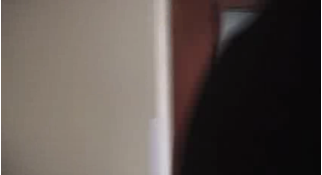
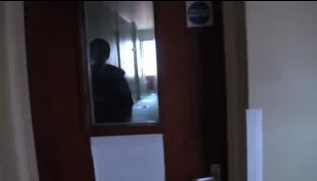
Although I think we used framing quite well in our preliminary task, we definitely improved upon it in the main task. In both our main and preliminary task, we set the white balance intermittently throughout shooting.
In our main task we made use of depth of field when following the antagonist through the hallway, as can be seen in the picture below we made sure that the camera was focused on the antagonist and it left the background blurry. I have also included a picture where the technique has been used for comparison. This technique forces the viewer's focus to the antagonist as he is who is in focus in the scene.


Although we learnt about using tripods, and how to use them to our advantage, we did not use one in our sequence. We wanted to use the handheld camera throughout the sequence to create pace and a small amount of chaos through the slight movement of the camera throughout the scene.
We avoided using the zoom function on the camera during filming since it was unnecessary for the effect that we were trying to achieve. Due to the fast pace of cuts, we could easily change the distance between the camera and the subject in order to achieve the same effect as zooming without losing image clarity.
Image Editing:
Throughout making our final product we learned a lot of image editing techniques that we incorporated into our work. One of the most important things that we learned about and utilised is continuity editing, and in using it I feel that our final product strongly maintains it's narrative throughout the whole of the sequence. We used a high frequency of cuts with each shot being fairly short to maintain pace throughout the whole of the sequence. By using a high frequency of cuts we were able to create tension in the first 3 quarters of the sequence, we then reduced the pace significantly much later to bring this tension to a climax.
As mentioned earlier, we used a short duration of shots for around 3 quarters of the sequence in order to help build tension which we then brought to a climax in the last quarter of the sequence. Although I think that we did this well, I think that we could have paid more attention to detail in this area to make the sequence better. One of the main changes I think that we could of made is to make the pace increase more gradually by starting with a longer shot duration and reduce it more gradually than we did.
We made use of ellipsis in our film when the protagonist escaped from the antagonist, we did not directly show the protagonist escape. We showed the chase between the protagonist and antagonist and then showed the antagonist looking lost and frustrated, making it obvious that the protagonist had escaped. I think this worked better than it would of to show the whole process as it allowed us to maintain pace. This is also the point where we tried to bring the tension to a climax, and we utilised ellipsis in order to do this.
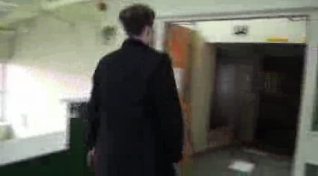 |
| The antagonist after he lost the protagonist in the chase. |
Different shots that we used:
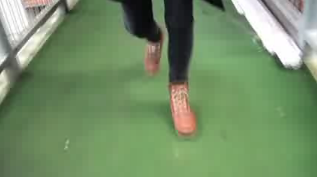 |
| High angle Close Up |
 |
| Medium Shot |
 |
| Very High angle Close Up |
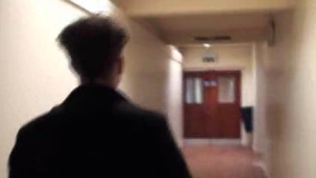 |
| OTS Medium close up |
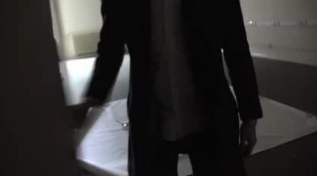 |
| Shallow high angle medium |
 |
| OTS medium |
In our sequence we avoided using a large variety of software transitions and post production effects as we felt that it would take away from the film and make it look bad. We mostly used cuts in our film, however we also used a fade to black during our title sequence. We used cuts since we thought they would be good to use to create and maintain the pace that we wanted.
Lighting:
Although we learnt a lot about artificial light and how to utilise it, we did not use it much in our sequence. I learnt that artificial light can be used in place of natural light, and can be made to look natural through the use of diffusers and reflectors. We also learned about the different lighting set ups, the most common of which being three point lighting. As suggested in the name, three point lighting is a lighting set up that consists of three lights: the key light, the back light, and the fill light. The Key light is the main light, and it's purpose is to serve as the principle illuminator. The colour, strength and angle of the key light determines much of the overall lighting of the scene. The purpose of the fill light is to fill the shadows of the subject on the side that isn't being covered by the key light. The back light, as the name suggests, illuminates the back of the subject, often giving the subject a thin border of light, highlighting them in the scene.
In our film we used a reflector at points to provide more light to the characters, however we were lucky that the natural light was very good in our filming location.
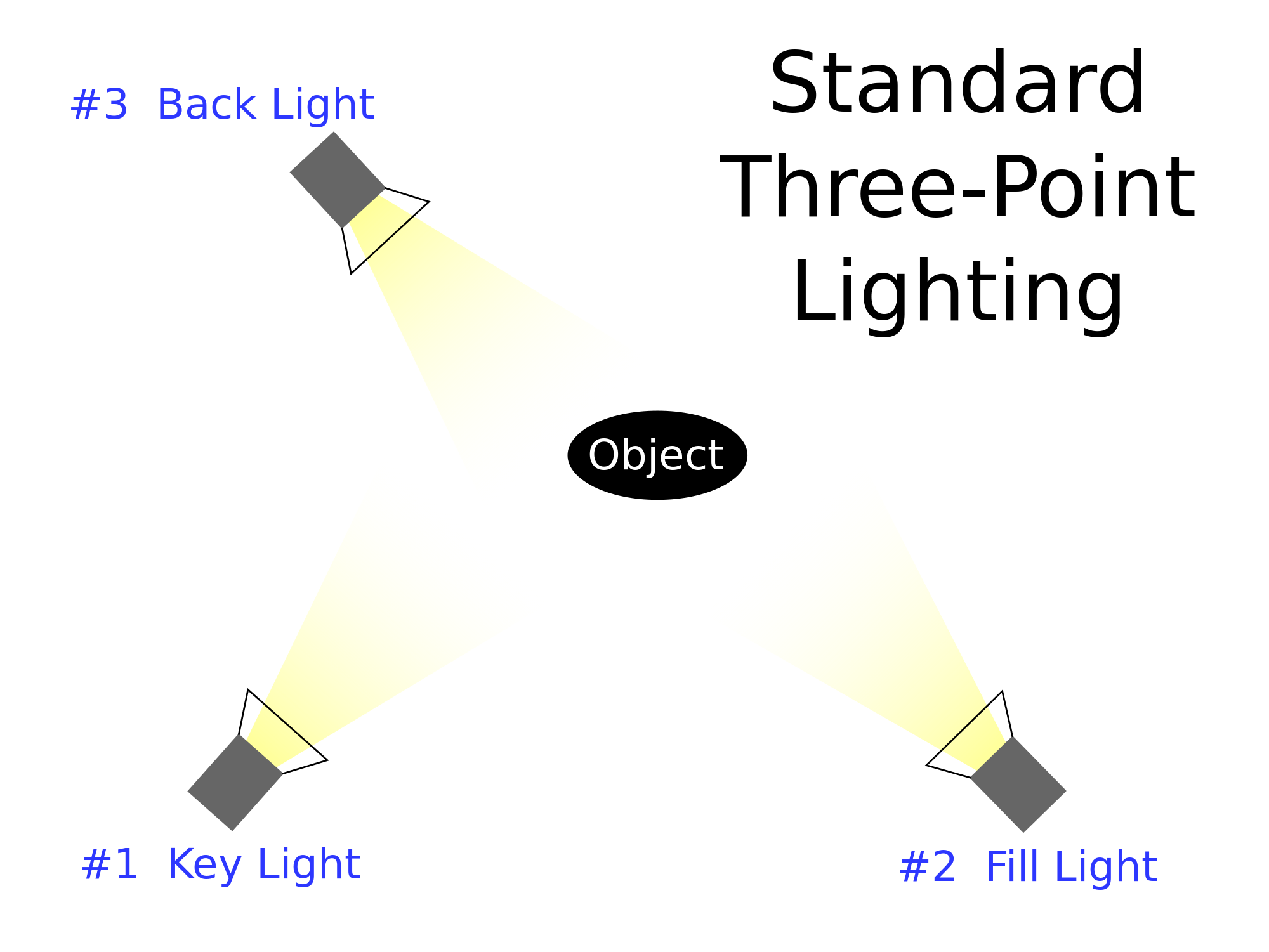
Sound editing:
We used the sound editing software 'Garageband' in order to edit the sound in our film. We used a lot of sound effects from the garageband library as foley sound for our film, this can be heard in some of the door slams, the footsteps, and a heartbeat sound. There are several other occasions that we use foley sound. We used royalty free music, found on youtube and soundcloud in our film. We used royalty free since we did not want to have to pay for music for our film.
A lot of diegetic sound was included in our final product, using a lot of the footstep sounds and noises from the original shots.
Question 7: Looking back at your preliminary task, what do you feel you have learned in the progression from it to the full product?
During the progression from our preliminary task to our final product I feel that I learnt a lot in all areas of film making.In our preliminary task there were a lot of mistakes and many other things that made the product look unprofessional and much worse than the final product. One of the biggest mistakes that we made in our preliminary task is that we broke the 180 degree rule at the point in the picture below, this happens at 15 seconds into the sequence if you look at the sequence. We used the 180 degree rule throughout the whole of our final product, and because of this it ended up looking much more polished than the preliminary task. In not following the 180 degree rule you create disorientation and confusion in the audience, and this is not what we were looking to achieve. Breaking the 180 degree rule also breaks the continuity that we were looking to keep in both sequences, and in the final product we achieved that.
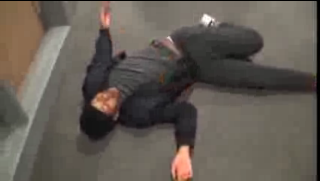
In our preliminary task, although we used Foley sound, it was quite badly done. This is because the footstep sound we used was out of sync, and the sound was not mixed well with the voices being quiet. The heartbeat sound effect that we used was used in places where it didn't fit, there were many places that needed sound but didn't have them such as when one of the characters fell or when the door opened. In not using sound in these parts, it makes the scene seem like it is missing something from the viewers perspective. It is one of the things that attributes to the scene feeling clunky and awkward. In our final product we focused much more on the sound, we focused on the sound being synchronised and well mixed and it turned out much better than the last time.
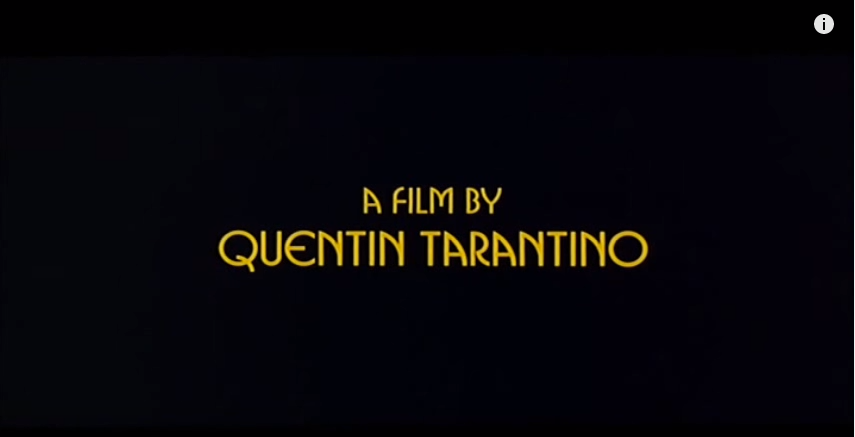
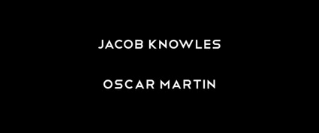
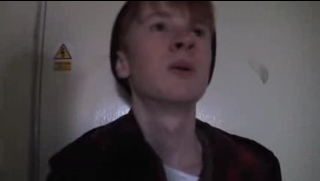
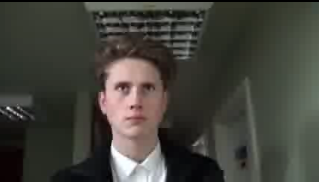

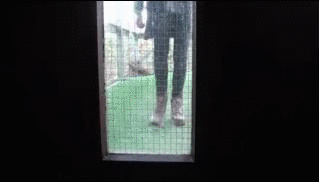
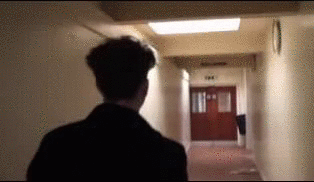
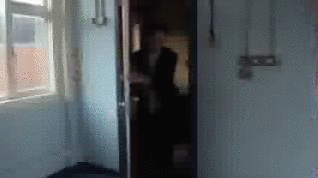

No comments:
Post a Comment